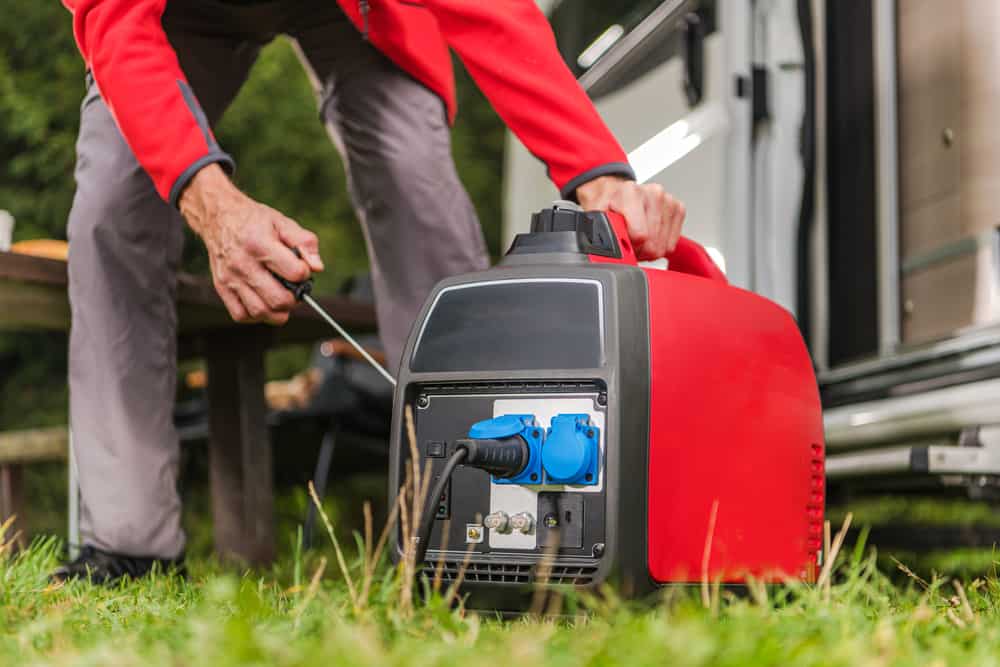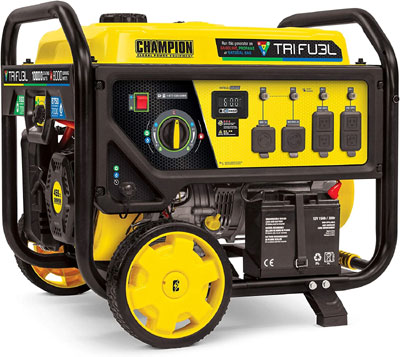A generator can be flashed by connecting it to a power source and then turning on the power switch. The generator will then start to produce electricity.
- Disconnect the generator from any power source
- Remove the generator’s housing to access the engine
- Locate the spark plug and remove it from the engine
- Inspect the spark plug for deposits or damage and clean or replace it as necessary
- reattach the spark plug to the engine and reconnect any power source to the generator

Credit: www.uetechnologies.com
How Do You Flash an Electric Generator?
If your electric generator isn’t working properly, you may need to flash it. Flashing an electric generator means resetting the generator’s computer system. This can be done by disconnecting the battery and then reconnecting it.
You may also need to remove the generator’s control panel and access the computer system directly. Once you’ve accessed the system, you can follow the instructions on how to flash an electric generator.
What Does It Mean to Flash a Generator?
When your generator is running low on fuel, you may need to flash it. This means adding a small amount of fuel, typically no more than 10% of the tank’s capacity. Flashing a generator is usually only necessary when the engine has been allowed to run dry and isn’t starting up again easily.
If you’re not sure whether or not your generator needs to be flashed, consult the owner’s manual. Many generators have a primer button that must be depressed in order to start the engine after it has run out of fuel; if your model has this feature, flashing will almost certainly be required.
Once you’ve determined that flashing is necessary, follow these steps:
1) Pour a small amount of fresh fuel into the tank (again, no more than 10%).
2) Check all connections and make sure that there are no leaks.
3) Prime the engine according to the manufacturer’s instructions – this step is critical!
4) Try starting the engine. If it doesn’t start right away, don’t keep trying – this can damage the starter. Wait a few minutes and then try again.
5) If the engine still won’t start, repeat steps 1-4 until it does.
With any luck, following these steps will get your generator running again without any major issues. However, if you continue to have trouble starting the engine even after flashing it several times, there may be another problem at play – in which case, it’s best to consult a professional for help troubleshooting and repairing your generator.
When Should You Flash the Field of a Generator?
If you have a portable generator, it’s important to know when and how to properly flash the field. Flashing the field of a generator is necessary when there is a build-up of carbon on the commutator bars or brushes. This can happen if the generator isn’t used for awhile, or if it’s used frequently in dirty or dusty conditions.
If you don’t flash the field regularly, eventually the carbon will build up enough that it will cause problems with starting and running the generator. The engine may run erratically or not start at all. In some cases, the carbon can even cause a fire inside the generator.
To avoid these problems, it’s recommended that you flash the field of your portable generator every 30 days or so. The process is simple and only takes a few minutes. First, make sure that the generator is turned off and disconnected from any power source.
Then remove the brush caps (if present) and unscrew the retaining screws that hold the brushes in place.
Next, use a clean rag to wipe away any dirt or debris from around the commutator bars. Once they’re clean, apply a small amount of electrical contact cleaner to each bar.
Replace the brush caps (if applicable) and screw them back into place before reconnecting your generator to its power source and turning it on again.
Does Flashing a Generator With a Drill Work?
A generator is a machine that converts mechanical energy into electrical energy. Generators are used in power plants to produce electricity. The process of converting mechanical energy into electrical energy is called electromagnetic induction.
Flashing a generator with a drill means turning the drill’s handle rapidly, which causes the drill bit to spin quickly. This spinning motion creates a magnetic field around the drill bit. When this magnetic field comes into contact with the coils of wire in the generator, it induces an electric current in those coils.
This current can then be used to power electrical devices.
So does flashing a generator with a drill work? Yes, it does!
This method of generating electricity is actually quite efficient and is often used in emergency situations when there is no other source of power available.
HOW-TO “Flash” A Generator | Make It Produce Power Again | MUST WATCH
How to Flash a Generator With a Drill
Are you in need of a power source but don’t have access to a generator? If you have a drill, you can flash it and use it as a generator!
To do this, first make sure that your drill is unplugged.
Next, remove the chuck from the drill (this is the part that holds the drill bit). Once the chuck is off, look inside the hole where it was attached. You should see two metal contacts.
Take a piece of metal and touch one of the contacts with one end. Touch the other contact with the other end of the metal. Doing this will cause a spark, which will in turn generate electricity.
You can now use this power to charge batteries or run small devices. Keep in mind that generating electricity with a drill can be dangerous, so be sure to take precautions such as wearing gloves and eye protection.
How to Flash a Generator Without a Drill
If you’re in a pinch and need to flash a generator without a drill, there are a few ways you can do it. First, if you have access to an air compressor, you can use that to power the drill. Alternatively, you can use a hand crank or battery-powered drill.
Here’s how to do it:
1. Attach the bit to the chuck of the drill.
2. Place the point of the bit on the work surface.
3. Apply pressure to the bit with your left hand while holding the drill in your right hand.
4. Begin cranking the handle or trigger of the drill slowly at first and then increasing speed as needed. Continue until the desired results are achieved.
Generator Flashing Tool
If you’ve ever worked with generators, you know that one of the most important tools in your arsenal is the generator flashing tool. This crucial piece of equipment allows you to safely and quickly connect or disconnect generators from each other or from the power grid.
But what exactly is a generator flashing tool?
And how does it work? In this blog post, we’ll answer those questions and more, so you can be confident in your generator-related connections.
A generator flashing tool is essentially a switch that helps to make or break an electrical connection.
It’s used to safely connect or disconnect generators from each other or from the power grid. The main purpose of a generator flashing tool is to prevent damage to equipment or injuries to people during these operations.
There are two types of generator flashing tools: manual and automatic.
Manual tools require the operator to physically open and close the switch, while automatic tools have sensors that do this automatically when the connection is made or broken. Both types of tools are designed for safety, but automatic tools offer an extra layer of protection by eliminating the need for someone to be present at the time of connection or disconnection.
To use a generator flashing tool, first make sure that all power sources are turned off and that no one is touching any exposed wires.
Then, insert the tool into the appropriate receptacle on the generator (this will vary depending on the type of connection you’re making). If you’re using a manualtool, simply open and close the switch as needed. For an automatic tool, follow instructions specific to that model – typically, there will be a button that needs to be pressed once everything is in place.
After completing your operation, always remember to removethe generator flashing tool before turning on any power source!
Field Flashing a Generator Pdf
Field Flashing a Generator Pdf
When it comes to generators, there are two different types of flashing that can be done. One is called field flashing, while the other is factory flashing.
In this blog post, we’re going to take a closer look at field flashing and what’s involved in the process.
First, it’s important to understand what a generator is and how it works. A generator is basically an electrical device that converts mechanical energy into electricity.
The most common type of generator used today is the internal combustion engine, which uses gasoline or diesel fuel to power the engine.
The engine turns a rotor inside the generator, which then produces electricity. This electricity can be used to power homes or businesses in the event of a power outage.
It can also be used to charge batteries or run small appliances.
Now that we know how a generator works, let’s take a closer look at field flashing. Field flashing is necessary when there are changes made to the electrical system of the generator, such as adding new accessories or replacing parts.
It’s also necessary if the generator has been sitting for awhile and needs to have its software updated.
To flash the generator, you’ll need access to the control panel.
Conclusion
If your generator is having trouble starting up, it may be time to give it a good cleaning. Flashing a generator is a process of deep-cleaning the machine in order to remove any built-up grime or debris. While it may seem like a daunting task, flashing a generator is relatively simple and only takes a few steps.






Leave a Reply